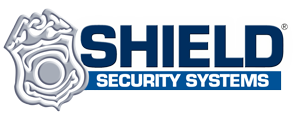It has long been an accepted truth that leaders are not the sole reasons behind any organization’s success. While credit is due for the the vital contributions they make, strong leaders understand that the company or organization is a system.
Like any system, a business works only if all the subsystems are working at peak capacity and meeting the needs of the whole as they arise. A leader’s greatest contribution then, can be said to be his/her capacity to create team alignment around a greater goal or set target.
In this post, we explain how leaders can use coaching techniques to create alignmentwithin the various teams in the organization.
What is Team Alignment?
Let’s first take a look at what we mean by the term ‘team alignment’ in business. At the basic level, teams need a purpose to get behind — a common purpose that guides their actions toward goals. Alignment is reached:
- When all members understand the team’s purpose and goals.
- When all members have the desire to reach stated goals; individual members feel a need or have a vested interest in meeting goals.
- When all members feel that the potential outcome is worth the effort and energy that will be put in.
- When all members believe the goals are achievable and the ideal outcome is possible.
- When all members have a sense of urgency about reaching the goal.
Alignment Starts From the Top Down
It all starts with the leaders. As a leader, you are responsible for imparting your vision and mission to the managers. You can do this by taking the time and employing the necessary resources.
Read our related blog post here to learn how you can build effective leadership skills in your organization.
To this end, seminars, workshops, and retreats are good tools to use in getting your top management team on board with your plan. They must be armed with the skills and knowledge necessary for them to rouse the employees toward a set goal.
Aligning the Team with Coaching
Coaching is simply a method of employee training and development. While geared toward the individual, it is also effective at improving the team as a whole. A well-aligned team is one which all its members are united in mission, geared towards certain goals, and meets the expected prerequisites. To that end, coaching should be viewed as a long-term endeavor.
The best leaders are judged on how good their employees perform when they are not around. Here then are some steps that leaders can use when coaching their employees:
• Create a positive atmosphere. It is important to put an employee at ease, especially when coaching is needed to address poor performance. In a coaching situation, the employee needs to understand that he/she faces no punitive measures, but that the exercise is purely to find out the reason for the substandard outcome.
• Establish an understanding of the employee’s existing knowledge. What does the employee know? Establishing what an employee is already familiar with eliminates the need to repeat things. Secondly, it is a platform on which to add more knowledge. You can know what to teach and be able to instruct better as the coach. Learn to create a successful hiring plan in our related blog post here.
• Training. At this point, you present the employees with whatever information you need them to know. Demonstrating work methods is also advised where practical illustrations are required. If training needs to happen elsewhere, workshops and seminars are handy.
• Re-train. More often than not, things learned only once tend to be forgotten. To improve employee retention of the work methods and information you have exposed them to, consider repeating those sessions.
• Evaluate. You should, during the training stage and periodically after that, test to see if your employees remember what was learned. This will enable you to decide whether to repeat the sessions or introduce them to newer material.
• Feedback and correction. Let your employees know when they have successfully completed learning sessions and what they still need to learn. Show them where they went wrong and provide them with the materials needed to improve in this regard, as well as the time to do so.
• Job evaluation. Every so often, check to see whether the employee is using the skills or knowledge learned in their job. The focus should be on improved efficiency owing to the new training. Over time, let the employee be accountable for monitoring his/her own performance.
• Reward. Employees should be recognized, praised and/or rewarded for the successful learning and utilization of skills or knowledge.
Teamwork is a Process
Achieving and then maintaining team alignment is an ongoing process that needs continual attention. Teams and environments change over time — sometimes very quickly — so a good leader is always attuned to the factors affecting the team dynamics and overall workplace culture.
Through personal coaching, technology tools and strategy, your vision for the business will be clearer for all and easier for your team to unite behind. Over time, the time and effort you invest in creating team alignment among your employee teams should pay off in greater employee satisfaction and business productivity.

